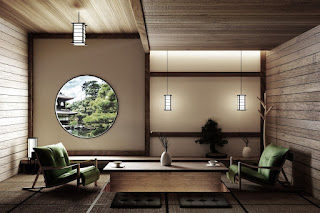Classic Wishing Well Woodworking Plans for Outdoor Decor
Classic Wishing Well Woodworking Plans for Outdoor Decor
This comprehensive guide provides detailed woodworking plans for constructing a classic wishing well, a charming and enduring addition to any outdoor space. The design emphasizes traditional aesthetics while offering practical considerations for durability and ease of construction. This project is suitable for intermediate to advanced woodworkers familiar with joinery techniques and finishing processes.
I. Design Specifications and Material Selection
A. Overall Dimensions and Structure
The proposed wishing well stands 60 inches tall, with a square base measuring 24 inches by 24 inches. The structure comprises a base, four vertical posts, a roof assembly, and a decorative bucket mechanism. The well's exterior will be constructed from pressure-treated lumber to ensure weather resistance. Consider using redwood, cedar, or similar rot-resistant wood for a more aesthetically pleasing, albeit more expensive, option. All lumber should be kiln-dried to minimize warping and shrinkage during construction.
Dimensions:
- Height: 60 inches
- Base: 24 inches x 24 inches
- Posts: 4 inches x 4 inches x 60 inches (4 pieces)
- Roof Beams: 2 inches x 4 inches (various lengths, detailed below)
B. Material List
The following materials are required for construction. Quantities may need adjustment based on specific lumber dimensions and potential waste.
- Pressure-treated 4x4 lumber: 4 pieces, 60 inches long (vertical posts)
- Pressure-treated 2x4 lumber: Various lengths for roof framing (see roof assembly section)
- Pressure-treated 2x6 lumber: 2 pieces, 26 inches long (base supports)
- Pressure-treated 1x6 lumber: Several pieces for base framing and decorative elements
- Exterior-grade plywood: 1/2 inch thick, for the base platform
- Roofing shingles or metal roofing: Sufficient quantity to cover the roof area
- Metal bucket or decorative container: Appropriate size for the well
- Wood screws (exterior-grade): Various sizes for assembly
- Wood glue (exterior-grade): For enhanced joint strength
- Wood stain or paint (exterior-grade): To protect and enhance the wood's appearance
- Hardware for the bucket mechanism: Chains, pulleys, or other mechanisms
II. Construction Process
A. Base Construction
Begin by constructing the base. This is a critical step to ensure the well's stability. Cut the 2x6 lumber to 24 inches and assemble a frame using mortise and tenon joinery or strong butt joints reinforced with screws and glue. This frame will support the plywood base. Attach the 1/2 inch exterior-grade plywood securely to the 2x6 frame using screws and glue. Ensure a level and stable base platform.
B. Post Erection and Assembly
Position the four 4x4 posts at the corners of the base, ensuring they are plumb and equidistant. Use lag screws or bolts to firmly attach the posts to the base frame, creating a strong and stable structure. Consider using galvanized steel brackets for added reinforcement. The posts should extend vertically to the desired height.
C. Roof Frame Construction
The roof frame requires careful planning. Create a simple gable roof design using 2x4 lumber. Cut the rafters at the appropriate angles to fit the well's dimensions. Assemble the frame using screws and glue. Ensure the frame is structurally sound and allows for proper roofing material installation. Detailed measurements and angles will need to be calculated based on the specified dimensions.
D. Roofing Installation
Once the roof frame is assembled, install the chosen roofing material (shingles or metal). Follow the manufacturer's instructions for proper installation. Ensure a watertight seal to protect the well's interior from the elements. The overhang of the roof should provide ample protection for the well structure.
E. Bucket Mechanism Installation
The installation of the bucket mechanism depends on the design chosen. A simple pulley system using chains and a durable rope will suffice for a classic wishing well. Securely attach the mechanism to the well's structure ensuring that the bucket can easily be raised and lowered. Ensure that all moving parts are smooth and free of obstructions. The bucket itself should be made of durable metal to resist weather damage.
III. Finishing and Detailing
A. Sanding and Surface Preparation
Before applying any finish, meticulously sand all surfaces smooth. This step is crucial for a professional finish. Pay particular attention to removing any rough edges or splinters. Start with a coarser grit sandpaper and gradually move to finer grits for a smooth and even surface.
B. Finishing Application
Apply a high-quality exterior-grade wood stain or paint to protect the wood from weathering and enhance its aesthetic appeal. Follow the manufacturer's instructions for application and drying times. Apply multiple coats for maximum protection and color saturation. Allow sufficient drying time between coats.
C. Decorative Enhancements
Consider adding decorative elements such as trim, carvings, or stencils to personalize the wishing well. These enhancements can significantly enhance the well's aesthetic appeal. Ensure that any added decorative elements are weather-resistant and securely attached.
IV. Safety Precautions
Always prioritize safety when working with power tools and lumber. Wear appropriate safety gear, including safety glasses, hearing protection, and work gloves. Follow all manufacturer's instructions for power tools. Take necessary precautions to avoid injuries during the construction process. Ensure proper ventilation when using paints, stains, or other chemicals.
Constructing a classic wishing well is a rewarding woodworking project. By following these detailed plans and taking necessary safety precautions, you can create a beautiful and durable addition to your outdoor space for years to come. Remember to adapt and modify these plans to suit your personal style and preferences, adding your unique touch to this timeless piece of outdoor decor.



